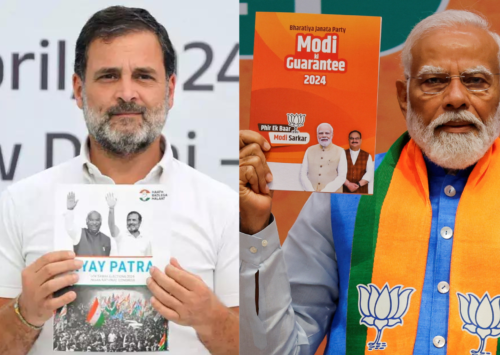Medical Termination of Pregnancy Act 2021: Progressive yet Problematic

The newly amended law increases the gestation limit and also extends MTP services under the failure of contraceptive clause to unmarried women (Photo/ Jerry Lai)
Last week, the Indian government notified rules under the latest amendment to the Medical Termination of Pregnancy (MTP) Act, 1971, that was passed the Parliament in March this year. The rules that allow termination of pregnancies even up to 24 weeks of the gestation period stand out in sharp contrast to recent moves in countries ranging from the United States to Poland, where getting abortions even after the sixth week is becoming a nightmare. Some of the more developed nations in Europe and other parts of the world that present themselves as champions of gender equality are still struggling over abortion rights or even pulling back from advances made earlier.
Yet, to portray India as the champion of women’s rights, at least in the matter of abortions, would be an extreme exaggeration as even though on the paper the law is very liberal, it comes loaded with several challenges when it comes to the practice of the law on the ground.
According to the MTP (Amendment) Act 2021, for abortions up to 20 weeks, one doctor’s approval is needed, for 20-24 weeks of the gestation period, sanction by two medical practitioners is necessary. Earlier, the law required one doctor for up to 12 weeks and two for between 12 and 20 weeks. Going a step further, the new amendment also calls for the setting up of state-level Medical Boards to decide if pregnancy may be terminated after 24 weeks.
The criteria for seeking abortions between 20 and 24 weeks includes sexual assault, rape or incest, minors, widowhood and divorce during the pregnancy, women with physical disabilities, mentally ill women, fetal abnormalities which may lead to physical or mental abnormalities after birth, or emergencies.
The law also extends MTP services under the failure of the contraceptive clause to unmarried women to provide access to safe abortion based on a woman’s choice, irrespective of the marital status.
The law remains inept to combat the real problem
Despite so many apparent liberalisations brought in by the latest amendment, activists and experts say there are still many problems with the law and more so with its implementation on the ground.
Speaking to Media India Group, Sonali Kusum, an assistant professor of Law at Tata Institute of Social Sciences (TISS), Mumbai questions the accountability of the medical practitioners and hospitals in providing the sanction needed for abortions.
“Although they have extended the time limit, the law does not counter the real problem of women not being able to get the doctor’s consent within the due time. It takes anywhere from 2-3 weeks to a month for just one doctor to provide the necessary sanctions,” says Kusum.
She says that considering that issue is as sensitive as abortion, the law should have put the onus on the doctors to respond within a clearly stipulated timeframe, preferably in a matter of hours.
“The law also does not address the situation where the two doctors consulted are of contrasting opinions,” Kusum adds.
As women often don’t get sanctions within the stipulated timeframe, they are forced to approach the courts and a study by an activist group says that the number of cases pending before the superior courts in India has risen sharply in the last couple of years, indicating the challenges for women seeking abortions.
Between May 2019 and August 2020, a total of 243 cases were filed in 14 High Courts and an appeal before the Supreme Court, while in the years 2016-2019 only 175 cases were recorded, according to Assessing the Judiciary’s Role in Access to Safe Abortion- II published last year by Pratigya Campaign, a network of over 100 individuals and organisations working for access to safe abortion care in India.
The report says that in the Bombay High Court, which heard 129 cases or 55 pc of the total cases between 2016-2019, 18 were filed before the 20-week cut-off, 13 were due to foetal anomalies, and five were due to rape. While 16 cases were heard by the Gujarat High Court over the 15-month period, of which 10 were under 20-week gestations.
The NGO says that the large number of court cases for seeking abortions show that women were being advised to seek a court order for abortion.
The provision of creating state medical boards for allowing abortions beyond 24 weeks has also drawn attention as many civil society organisations are wary about the proper implementation of the Act.
“The amended Act is still a medicalised Act and health is a state subject in India so how the state medical boards will function is something that we and other civil society organisations are a little wary about. We fear that the medical boards could be more of a hurdle than an easing factor,” Debanjana Choudhuri, Asia Advocacy and Partnerships advisor at MSI Reproductive Choices, an international NGO providing contraception and safe abortion services around the world, tells Media India Group.
“It is also worth questioning that who would the persons sitting in the medical boards be. The government also needs to provide more clarifications about the powers of the medical boards,” she adds.
Another challenge for women getting abortions, safely and in time, is that the severe shortage of doctors in India, and more so of specialists like gynecologists and obstetricians. PRS India, a Delhi-based NGO that makes the Indian legislative process better informed, more transparent, and participatory, writes that the Act requires abortion to be performed only by doctors with specialisation in gynecology or obstetrics.
India ranks poorly on the list of countries with access to doctors. The World Health Organisation has mandated at least 1 doctor per 1000 population. However, as recently as last year, India had only 1 doctor per 1521 people, says a report submitted by the Finance Commission to the government earlier this year, indicating a severe shortage overall. Even as per the World Bank, in 2018, India had 0.9 doctors per 1000 people, fewer than neighbours like Pakistan or Sri Lanka.
While overall the country faces a shortfall, it becomes extremely critical in the rural areas as most doctors are located in cities and that too in metropolises. According to the Rural Health Statistics (RHS) 2019-20 released in April 2021, as compared to requirement for existing infrastructure, there is a shortfall of 78.9 pc of surgeons, 69.7 pc of obstetricians & gynaecologists, 78.2 pc of physicians and 78.2 pc of paediatricians.
“The shortage of qualified medical professionals may continue to limit the access of women to safe abortion services,” says PRS.
Women’s autonomy
While the latest amendment to the MTP Act of 1971 claims to expand access of women to safe and legal abortion services, many lawyers believe that, in passing of the Act, the state continues to control women’s reproductive and sexual rights while wielding the argument of “progress”.
“The co-option of “women’s rights” in the rhetoric to promote the Bill is ironic, as its provisions continue to criminalise abortion, and perpetuate harmful stereotypes and stigma around reproduction, sexuality and motherhood”, writes Dipika Jain, a professor of law and director of the Centre for Justice, Law and Society at the Jindal Global Law School in Haryana.
The Center for Reproductive Rights, a New York-based global legal advocacy organisation that seeks to advance reproductive rights, classifies at least 67 countries where abortion is possible on request of the pregnant person. India, even with the latest amendment, continues to remain out of this category and rather squeeze in the category that allows abortion based on broad social or economic grounds.
Also, while the latest amendment clarifies the rights of unmarried women seeking abortion, there have already been various cases of unmarried women being unnecessarily questioned and hassled to bring along their parents, none of which finds a mention in the law.
“I got pregnant at the age of 23, this year in May while finishing my engineering in a different city than my hometown. I did not know any doctors in that city but, I was aware of the law. It was disappointing to see reputed doctors refusing to terminate, forcing me to bring along my parents and basing their arguments on moral grounds,” Suvidha, (name changed) who is an engineer working with a multinational company tells Media India Group.
“Precisely put, the new amendment is progressive in nature however it shows that we have still not come to understand abortion as the right of women and a part of bodily autonomy of the concerned person,” says Kusum of TISS.












